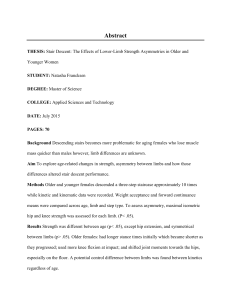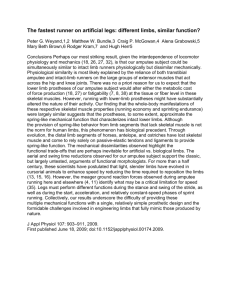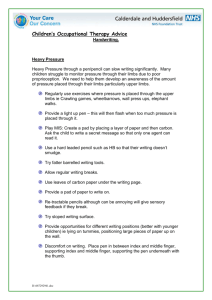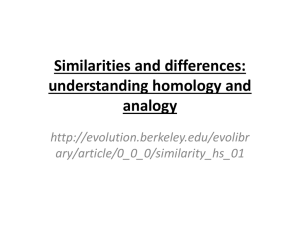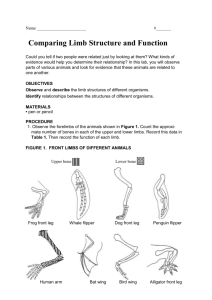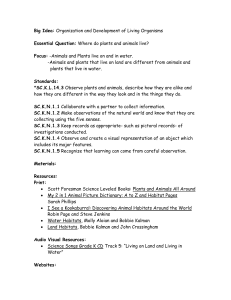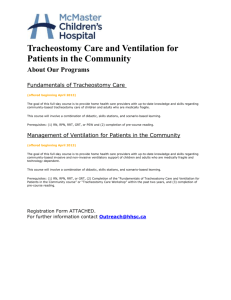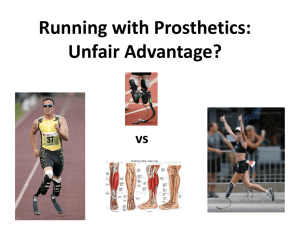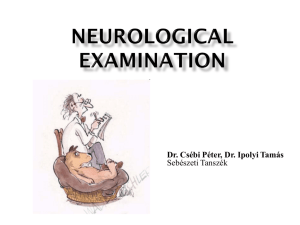Clinical Center of Rehabilitation multispecialist Auxilium Vitae
advertisement
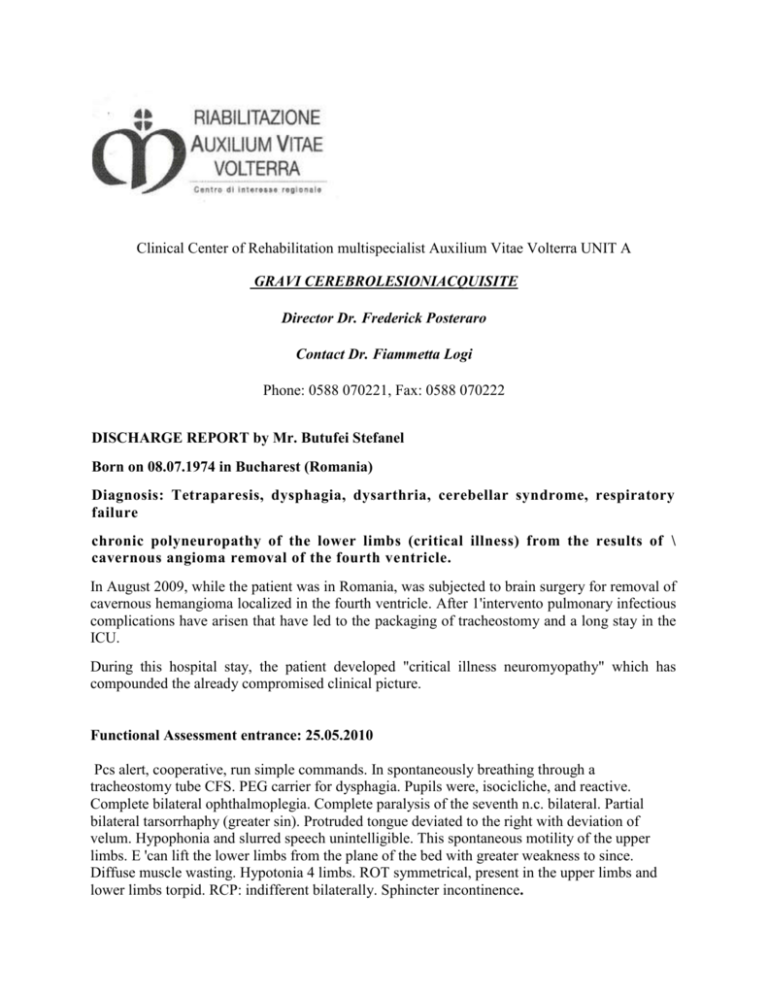
Clinical Center of Rehabilitation multispecialist Auxilium Vitae Volterra UNIT A GRAVI CEREBROLESIONIACQUISITE Director Dr. Frederick Posteraro Contact Dr. Fiammetta Logi Phone: 0588 070221, Fax: 0588 070222 DISCHARGE REPORT by Mr. Butufei Stefanel Born on 08.07.1974 in Bucharest (Romania) Diagnosis: Tetraparesis, dysphagia, dysarthria, cerebellar syndrome, respiratory failure chronic polyneuropathy of the lower limbs (critical illness) from the results of \ cavernous angioma removal of the fourth ventricle. In August 2009, while the patient was in Romania, was subjected to brain surgery for removal of cavernous hemangioma localized in the fourth ventricle. After 1'intervento pulmonary infectious complications have arisen that have led to the packaging of tracheostomy and a long stay in the ICU. During this hospital stay, the patient developed "critical illness neuromyopathy" which has compounded the already compromised clinical picture. Functional Assessment entrance: 25.05.2010 Pcs alert, cooperative, run simple commands. In spontaneously breathing through a tracheostomy tube CFS. PEG carrier for dysphagia. Pupils were, isocicliche, and reactive. Complete bilateral ophthalmoplegia. Complete paralysis of the seventh n.c. bilateral. Partial bilateral tarsorrhaphy (greater sin). Protruded tongue deviated to the right with deviation of velum. Hypophonia and slurred speech unintelligible. This spontaneous motility of the upper limbs. E 'can lift the lower limbs from the plane of the bed with greater weakness to since. Diffuse muscle wasting. Hypotonia 4 limbs. ROT symmetrical, present in the upper limbs and lower limbs torpid. RCP: indifferent bilaterally. Sphincter incontinence. Motricity Index: right upper limb 48/100, left upper limb 61/100, right lower limb 10/100, left lower limb 10/100. Trunk control test: 36/100. Objectives: Improving the effectiveness of cough with management of tracheobronchial secretions and eventual weaning from CT. Improvement of dysarthria and verbal communication skills. Evaluation and treatment of dysphagia. Improved control of the trunk and head, muscle strengthening and stimulation of motility in all 4 limbs. Recovery of sphincter control . Esami strumentali piu recenti: CT scan (27/09/10): "no focal abnormalities, nor expansive processes within the brain and infratentorial supra; cisternali-ventricular CSF spaces and periencefalici within normal limits and structures in the median axis. Outcomes osteotomy with the presence of an occipital collection of CSF density of 53x51 mm, which reaches from the subcutaneous tissue of the occipital region of the CSF spaces pericerebellari " Specialist Consultations: Ophthalmology (19/07/10): "leueoma bilateral corneal, specific therapy is recommended in the attached Ophthalmology (7/12/10): "clear and intact corneas, for the momentary would leave in place the tarsorrafia. Continuing their current medication. He has performed breathing exercises and treatment for the improvement of the management of respiratory secretions. The controls arterial blood gas analysis confirmed a state of compensated chronic respiratory failure, without oxygen support. It was attempted nocturnal polysomnographic recording for evaluation of respiratory parameters, interrupted for intolerance by the patient. It was not possible to remove the tracheostomy tube, in much the patient still has difficulty expectoration with other things and management of secretions; overnight require frequent endotracheal aspirations. During daytime the airways are kept clean by the use of InExsufflator (incentivatore cough). From the point of view of motoric : is reached and a slight improvement in the control of the trunk and head with the attainment of a decent posture sitting in a wheelchair. Good motility of the upper limbs , there remains a serious weakness in the lower limbs . Transfers with total postural support . Does not maintain an erect posture . Logopedica Report : Initial Observing the patient and appeared cooperative and motivated during the exercises ; aware of their deficits and oriented in time and space and personal level. During the rehabilitation training exercises have been proposed for the agreement pneumoengineer , exercises to promote motility of the tongue, lips and mouth and exercises to facilitate the closure of the tracheostomy tube . At the current state of the patient is left with a fenestrated tracheostomy tube closed with controcannula and speech valve for a few hours per day, improved the agreement pneumoengineer and motility of the tongue remains severe hypotonia sores. The tests of swallowing showed a severe deficit in the oral procedure. The power and the intake of liquids is carried out exclusively by the PEG. Functional evaluation at discharge Motricity Index: right upper limb 80/100, left upper limb 80/100, right lower limb 28/100, left lower limb 28/100. Trunk control test: 48/100. In the coming years, has been under observation a personal physiotherapist, making visible progress. The patient's condition improved significantly in terms of motor skills, so he can do some steps with metal frame. Is spontaneously breathing through a tracheostomy tube CFS. PEG carrier for dysphagia. It has not been admitted to other hospitals.
